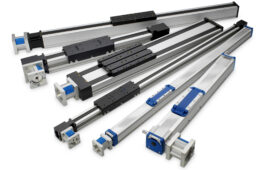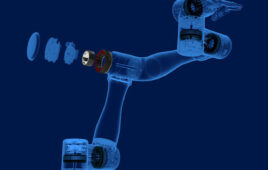Teschler on Topic
Leland Teschler • Executive Editor
[email protected]
On Twitter @ DW_LeeTeschler
Long ago, the engineering magazine that employed me explored the idea of working with local universities on an educational program. Our concept involved instructing engineers on newly emerging technologies, but without requiring them to actually sit in a classroom. This was long before the days of the internet. What we suggested was novel for its time and would have exposed the school to a large group of new potential students.
But the concept went over like a lead balloon with the colleges we approached. The reason why  became evident quickly: The schools had physical buildings. Any idea that didn’t involve putting people in them was a nonstarter.
became evident quickly: The schools had physical buildings. Any idea that didn’t involve putting people in them was a nonstarter.
I was reminded of this little fiasco recently when I ran across an article in The Economist magazine that, shocker, found universities tend to resist online learning. This reality elicited hand-wringing on the part of Economist editors because online teaching could drastically cut education costs.
And in the age of undergraduates sometimes carrying six-figure student loans, there is little question that higher education costs desperately need trimming. Readers for whom undergrad tuition is a distant memory might gain illumination on the subject from the results of a study done by the online publication Business Insider. BI calculated the cost of the credit hours (not including fees, room and board) needed to graduate from some of the most expensive U.S. universities. Here are a few highlights: U. of Chicago, $188,556 for four years; Dartmouth, $187,0523; New York University, $174, 984; USC, $182,408; Columbia University, $213,520.
Of course, tuition at many state universities are less stratospheric. To pick one example, four years of tuition at the University of Nebraska-Lincoln runs about $31,000 for in-state students, about $97,000 for out-of-staters. (Though engineering students at UN-L pay more.)
Online courses are a way to potentially make even UN-L-type fees much cheaper. And the evidence is that students learn as much doing online coursework they would sitting in a conventional class. That was one conclusion of a study by the non-profit educational organization Ithaka Harbors Inc. Its researchers examined several courses where students spent more than half their time working with programmed learning software rather than sitting through lectures. It turned out students learned as much this way as in conventional classes but with educational costs cut by more than 50% in some cases.
Another study by the Center for Academic Transformation at Rensselaer Polytechnic Institute reached similar conclusions. It looked at 30 institutions that employed some kind of online learning and found they had reduced costs by an average of 40% with no discernable drop in student performance.
Despite such documentation, it’s likely that the first institutions to fully embrace online learning will be those on the educational fringe. For a hint at what might be possible, consider a non-profit American-accredited online institution called University of the People. You can get a four-year BS degree in computer science there for a mere $4,060. And those for whom that figure is unaffordable can get scholarships.
There are logistical hurdles to overcome before U-of-P-style education costs can go mainstream – one big one is that the institution’s faculty consist of academics who volunteer their time. And it’s not clear how courses that require lab work can go online.
Nevertheless, don’t be surprised if the engineers you work with in coming years have done most of their coursework from a laptop in their bedroom.
You may also like:
Filed Under: Commentaries • insights • Technical thinking, Student programs, Trends








